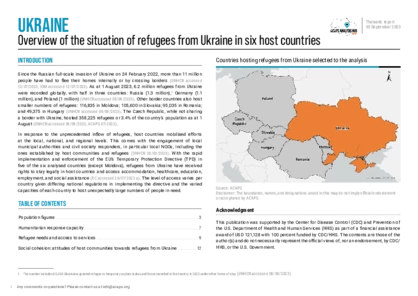The Russia–Ukraine conflict started in 2014 and escalated into a full-scale Russian invasion in 2022, triggering mass displacement within Ukraine and abroad.
Initially, an influx of more than 700,000 people were displaced from Ukraine to or through Moldova. By 30 June 2025, over 133,000 refugees from Ukraine remained in the country. Financial, administrative, and informational barriers, as well as unemployment, continue to prevent access to free healthcare particularly for older refugees, those who have chronic illnesses, or people with disabilities.
Another financially related hardship pertains to housing support, which is also compounded for an unknown number of the Roma community, who face discrimination based on their ethnicity. 80% of displaced refugees are women and children, and the majority of the refugees rely on humanitarian aid. Care responsibilities and language barriers bar women with children from accessing employment opportunities. (CFR accessed 13/08/2025, UNHCR accessed 13/08/2025, UNHCR 19/01/2025, UN accessed 13/08/2025)
The Russia–Ukraine conflict started in 2014 and escalated into a full-scale Russian invasion in 2022, triggering mass displacement within Ukraine and abroad.
Initially, an influx of more than 700,000 people were displaced from Ukraine to or through Moldova. By 30 June 2025, over 133,000 refugees from Ukraine remained in the country. Financial, administrative, and informational barriers, as well as unemployment, continue to prevent access to free healthcare particularly for older refugees, those who have chronic illnesses, or people with disabilities.
Another financially related hardship pertains to housing support, which is also compounded for an unknown number of the Roma community, who face discrimination based on their ethnicity. 80% of displaced refugees are women and children, and the majority of the refugees rely on humanitarian aid. Care responsibilities and language barriers bar women with children from accessing employment opportunities. (CFR accessed 13/08/2025, UNHCR accessed 13/08/2025, UNHCR 19/01/2025, UN accessed 13/08/2025)



